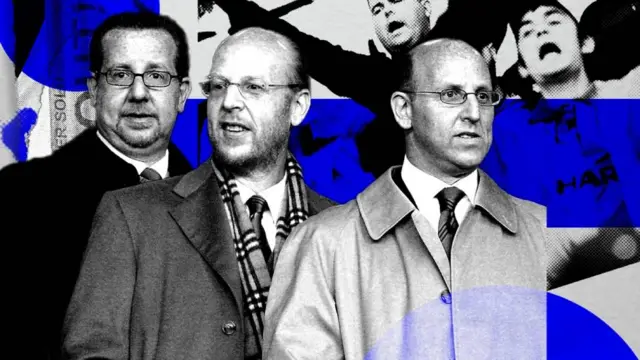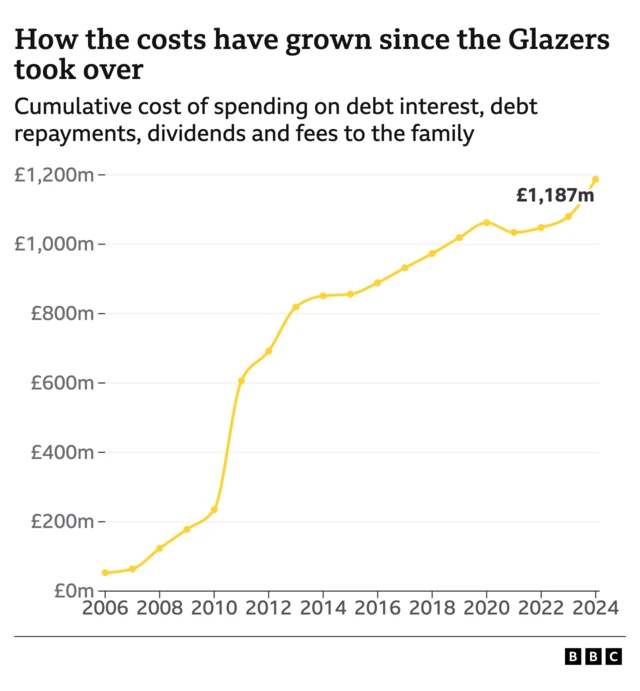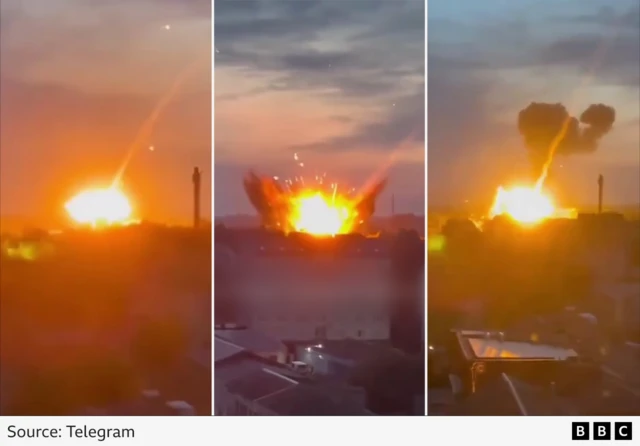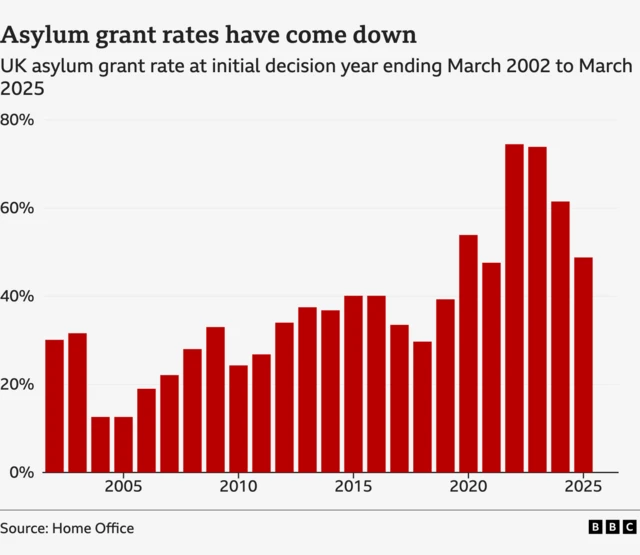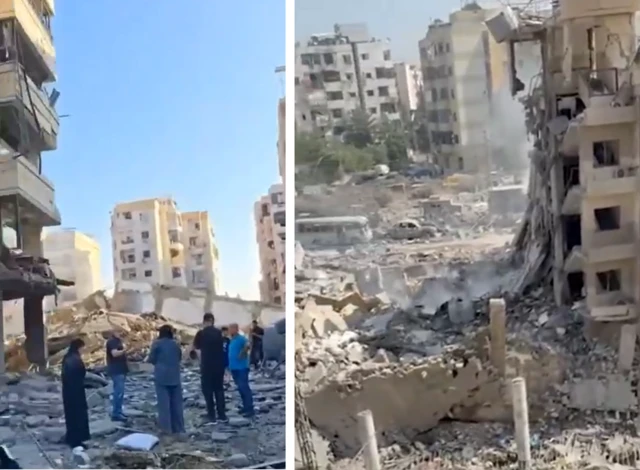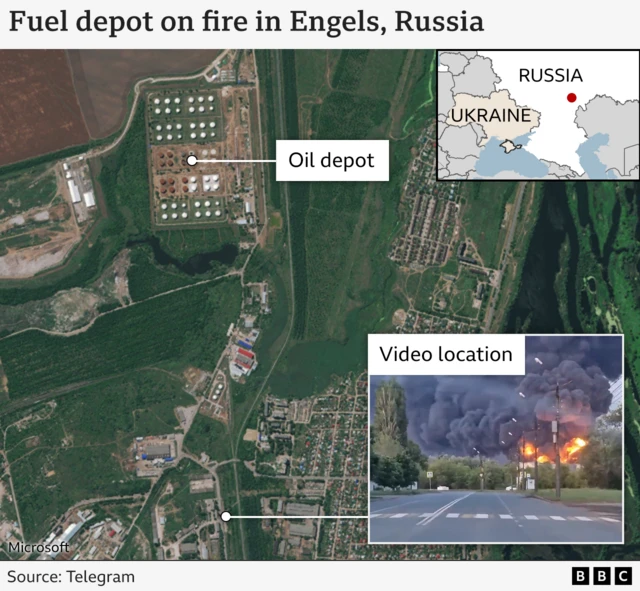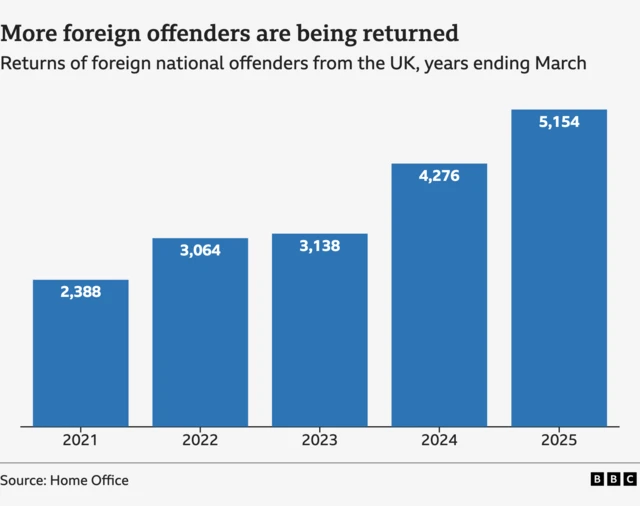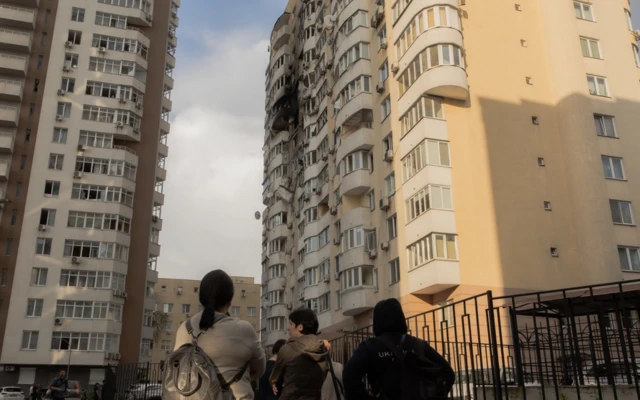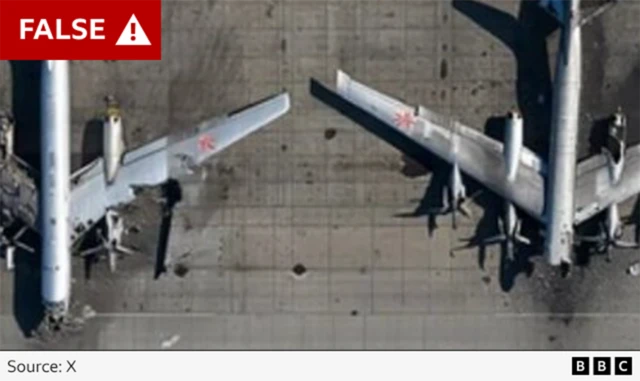Still to come at BBC Verifypublished at 17:18 BST 6 June
 Paul Brown
Paul Brown
BBC Verify senior journalist
That’s it for our live page today, but here’s a look back at what we’ve reported on:
- We fact-checked Conservative leader Kemi Badenoch’s claims about the asylum application grant rate in the UK
- We also published the results of an investigation into an Israeli strike on Gaza, which uncovered a previously unacknowledged strike in al-Mawasi
- Elsewhere on the international front, we verified air strikes in Ukraine and Lebanon, and a fire at an oil depot in the Russian city of Engels
That same oil depot was also hit in January this year. From a verification perspective, the Engels case provides a relevant example of why it's important to ensure that any footage we investigate is new, and not being recycled from an older incident at the same location.
Later this evening, you can look forward to a video from our Analysis Editor Ros Atkins, which explains everything we know so far about the mass drone attack that Ukraine carried out on Russia last Sunday.
You can keep up with all our videos, investigations and analysis at our dedicated page on the BBC website.


